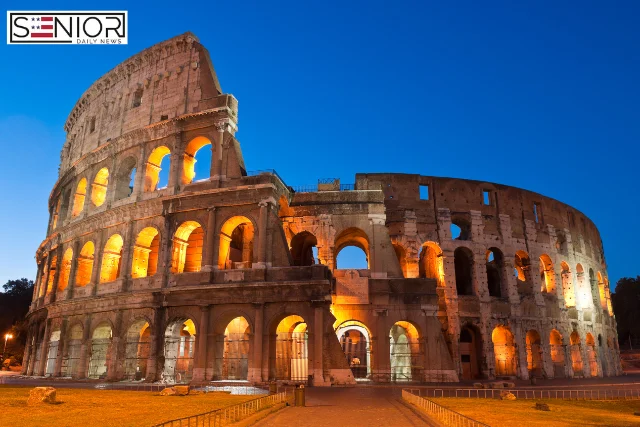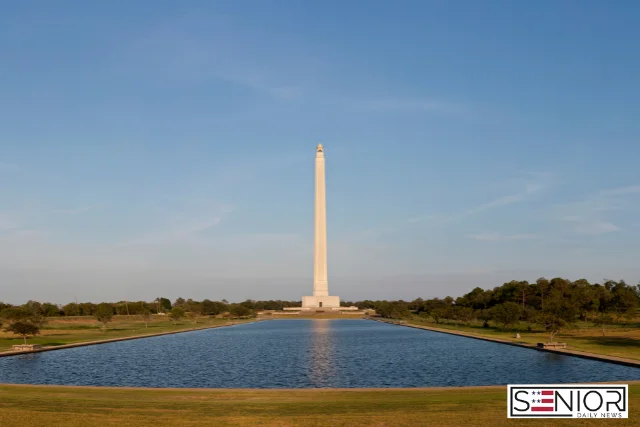5 Great Cities for Travellers Who Love Cultural History

For travelers who find joy in walking through centuries-old streets, admiring intricate architecture, and learning the stories that shaped civilizations, cultural history offers an irresistible draw. Unlike fast-paced modern getaways, trips centered around cultural heritage allow you to slow down, savor every moment, and gain a deeper understanding of the past. Whether you’re an experienced globetrotter or looking for a meaningful vacation after retirement, exploring cities steeped in cultural history can enrich your travels like nothing else.
In this guide, we’ll look at five remarkable cities worldwide where cultural history takes center stage. From ancient ruins to living traditions, each destination provides a unique journey through time.
Why Cultural History Travel Appeals to Seniors
Cultural history travel combines learning with leisure. For seniors, this form of tourism can be especially rewarding: it offers slower-paced itineraries, immersive experiences, and opportunities to connect with local communities. Visiting museums, attending cultural festivals, or walking through historical neighborhoods doesn’t require intense physical exertion, making it an accessible way to keep exploring the world.
Additionally, diving into cultural history can provide a sense of connection — linking personal memories with global events. Many older travelers appreciate how such trips bridge the past and present, offering fresh perspectives on places they’ve read about or seen in films decades earlier.
1. Rome, Italy – The Eternal City of Layers
Rome is a living museum, where every street corner reveals remnants of an empire that once ruled much of the known world. For those drawn to cultural history, this city delivers an unparalleled experience.
Highlights of Rome’s Cultural History
- The Colosseum and Roman Forum: Walking through these ruins, you can almost hear the echoes of gladiator battles and public gatherings that defined ancient Roman life. Guided tours often include fascinating stories about the emperors and citizens who walked these grounds nearly 2,000 years ago.
- The Vatican City: Home to St. Peter’s Basilica and the Sistine Chapel, Vatican City showcases breathtaking art and religious history. Michelangelo’s ceiling alone can captivate visitors for hours.
- Piazzas and Fountains: Squares like Piazza Navona and Trevi Fountain reflect Rome’s baroque and renaissance artistry, perfect for relaxed exploration.
Travel Tips for Seniors
- Plan visits during spring or fall to avoid extreme heat and crowds.
- Consider skip-the-line passes for major attractions to reduce waiting time.
- Many museums and archaeological sites offer discounted tickets for seniors.
2. Kyoto, Japan – A Living Tapestry of Tradition
Kyoto, Japan’s ancient capital, is a city where cultural history thrives alongside modern life. With over 1,600 temples and shrines, traditional tea houses, and beautifully preserved gardens, Kyoto offers travelers a glimpse into Japan’s spiritual and artistic heritage.
Highlights of Kyoto’s Cultural History
- Kinkaku-ji (Golden Pavilion): This shimmering Zen temple is surrounded by serene gardens, offering a perfect moment for reflection.
- Fushimi Inari Shrine: Famous for its thousands of red torii gates, this site symbolizes centuries of devotion and craftsmanship.
- Gion District: Known for its traditional wooden machiya houses, Gion remains the heart of Kyoto’s geisha culture.
Travel Tips for Seniors
- Public transportation is efficient, but walking tours are also popular — choose gentle routes to avoid fatigue.
- Visit during cherry blossom season or autumn foliage for breathtaking scenery paired with historic charm.
- Many temples are accessible, but check in advance for those with steep stairways or limited ramps.
3. Athens, Greece – Cradle of Western Civilization
Few cities can rival Athens when it comes to cultural history. As the birthplace of democracy, philosophy, and classical art, Athens offers a journey into the foundations of Western thought and architecture.
Highlights of Athens’s Cultural History
- The Acropolis: Dominating the city skyline, this ancient citadel houses iconic structures like the Parthenon, dedicated to the goddess Athena.
- The Acropolis Museum: A modern space displaying artifacts excavated from the Acropolis, blending ancient and contemporary aesthetics.
- Plaka Neighborhood: Wander through charming streets filled with neoclassical homes, family-run tavernas, and souvenir shops echoing centuries-old traditions.
Travel Tips for Seniors
- Wear supportive shoes, as some archaeological sites involve uneven terrain.
- Opt for guided tours to fully appreciate the historical significance of each landmark.
- Early mornings or late afternoons provide cooler temperatures and fewer crowds at major attractions.
4. Istanbul, Türkiye – A Bridge Between Continents
Istanbul’s cultural history is defined by its role as a crossroads of civilizations. Formerly known as Byzantium and Constantinople, the city blends influences from the Roman, Byzantine, and Ottoman empires, creating a truly unique cultural mosaic.
Highlights of Istanbul’s Cultural History
- Hagia Sophia: Once a church, later a mosque, and now a museum, this architectural masterpiece symbolizes Istanbul’s layered history.
- Topkapi Palace: The opulent residence of Ottoman sultans, showcasing treasures, ornate rooms, and breathtaking views of the Bosphorus.
- Grand Bazaar: One of the world’s oldest markets, where centuries-old traditions of trade and craftsmanship are still alive.
Travel Tips for Seniors
- Many historic sites are centrally located, reducing long commutes.
- River cruises along the Bosphorus provide a scenic and restful way to see the city.
- Turkish cuisine, rich in flavors but gentle on the stomach, offers comforting meals after sightseeing.
5. Cusco, Peru – Gateway to the Incan World
Nestled high in the Andes, Cusco was once the capital of the Inca Empire. Today, it blends Spanish colonial architecture with Incan stonework, offering a fascinating cultural history that predates European arrival in the Americas.
Highlights of Cusco’s Cultural History
- Plaza de Armas: The city’s main square, surrounded by colonial buildings and historic churches.
- Sacsayhuamán Fortress: A marvel of Incan engineering, featuring massive stone walls constructed without mortar.
- Sacred Valley and Machu Picchu: While technically outside Cusco, these nearby sites provide unforgettable glimpses into ancient Incan civilization.
Travel Tips for Seniors
- Take time to acclimate to high altitude; consider a slower pace during the first few days.
- Many guided tours include transportation, easing the strain of navigating mountainous terrain.
- Visit during the dry season (May to September) for comfortable weather and clearer views.
How to Make the Most of Cultural History Travel
Plan for Comfort and Accessibility
When planning trips focused on cultural history, choose accommodations near historical centers to minimize transit time. Research mobility options, such as shuttle buses or accessible walking paths, especially for ancient sites.
Balance Learning with Leisure
While museums and monuments are enriching, schedule downtime to enjoy local cafés, parks, or scenic viewpoints. This approach prevents fatigue and allows you to absorb experiences at a comfortable pace.
Connect with Local Guides
Hiring knowledgeable guides can transform visits from simple sightseeing into deeply engaging narratives. Guides often share personal anecdotes, lesser-known stories, and cultural insights that enrich your understanding.
Travel Light, Travel Smart
Pack comfortable shoes, layered clothing, and a lightweight day bag. Many historic areas have cobblestone streets or uneven paths, so practical attire enhances comfort and safety.
FAQs
1. What makes cultural history travel different from regular tourism?
Cultural history travel emphasizes learning about a destination’s past, traditions, and heritage rather than just visiting modern attractions. It involves exploring museums, historic neighborhoods, and landmarks that reveal how a city evolved over centuries.
2. Are cultural history trips physically demanding for seniors?
Not necessarily. Many cities with rich cultural history offer accessible tours and transportation options. By planning carefully, you can tailor your itinerary to match your comfort level and mobility needs.
3. When is the best time to visit these culturally historic cities?
Spring and fall are ideal for most destinations, offering mild weather and fewer crowds. However, specific festivals or cultural events might also influence the timing of your trip.
4. How can I prepare for international cultural history travel?
Check visa requirements, health advisories, and accessibility options ahead of time. Learning a few phrases in the local language can enhance your interactions with residents and enrich your cultural experience.
5. Can I combine cultural history travel with other types of vacations?
Absolutely. Many travelers pair cultural history trips with culinary experiences, nature tours, or relaxation retreats, creating well-rounded itineraries that appeal to diverse interests.
Image Source: Canva






